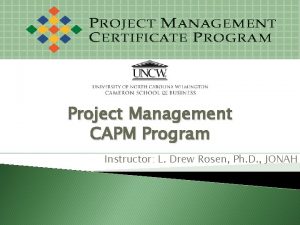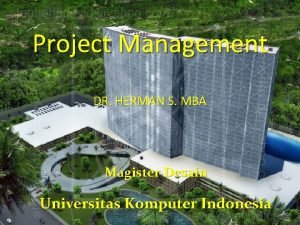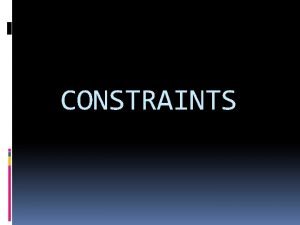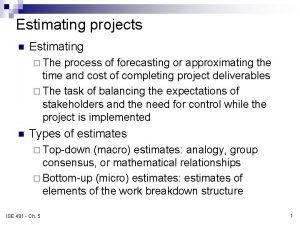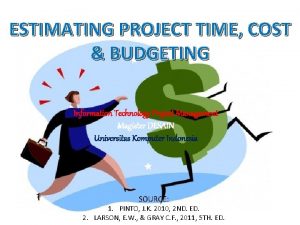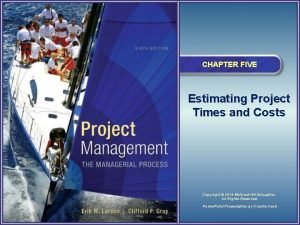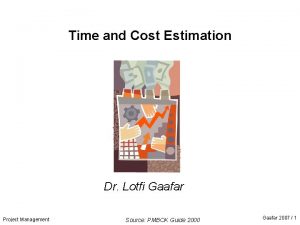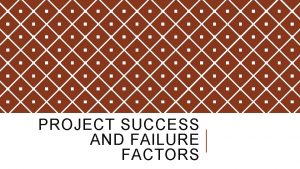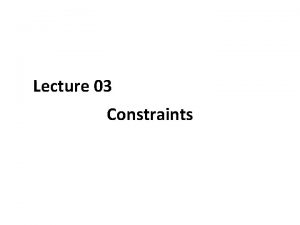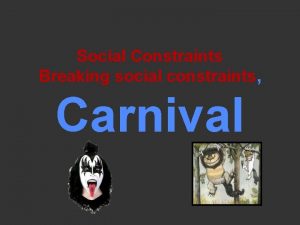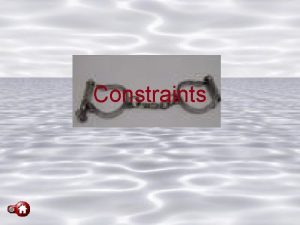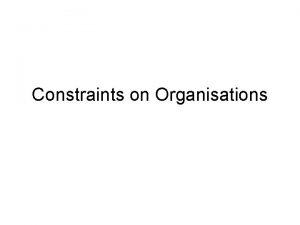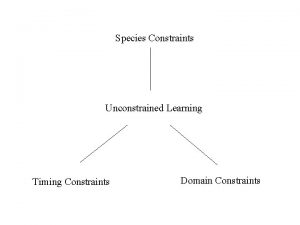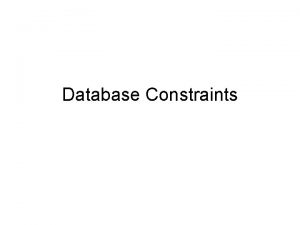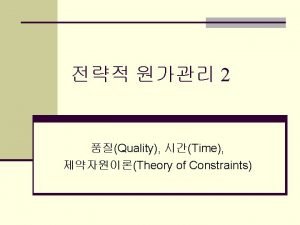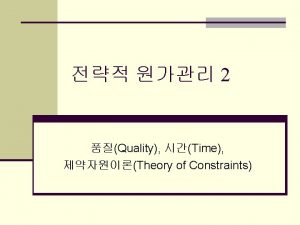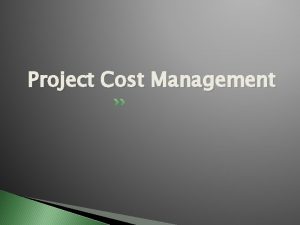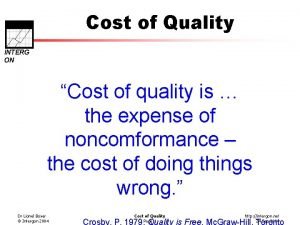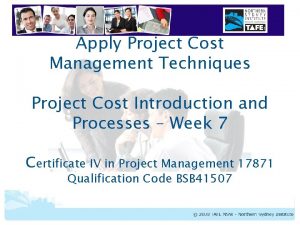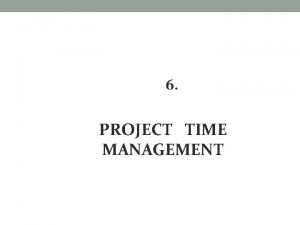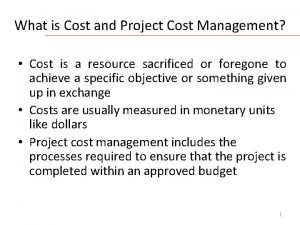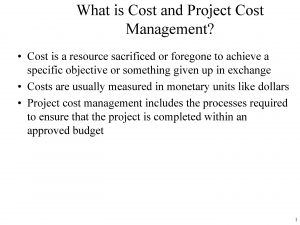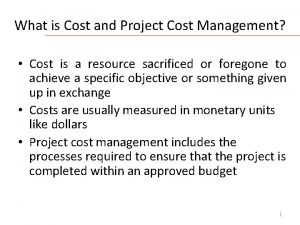Introduction Success Cost Project Constraints Quality Time Cost
























- Slides: 24


Introduction Success Cost Project Constraints Quality Time

Cost overrun Risks Poor Quality Project Constraints Delays

What is the risk Unknown Risk endeavor Unexpected action Undesirable Unpredictable

Risks in Construction Economic Factors Client Social Factors Quantity Survey Architect Project Manager Engineer Inspector` Political Factors Environmental Factors Supplier Contractor

Types of Risks in Construction Physical Financial & Economic Acts of God Risks Political & Environ. Const. Related Design

Types of Risks in Construction Physical Financial & Economic Acts of God ü Flood ü Earthquake Risks ü Landslide ü Fire ü Wind damage Political & Environ. Const. Related Design

Types of Risks in Construction Physical Financial & Economic Acts of God Physical ü Damage to structure ü Damage to equipment Risks ü Labor injuries ü Fire Political & Environ. Const. Related Design ü Theft

Types of Risks in Construction Physical Financial & Economic Acts of God Financial & Economic ü Inflation ü Availability of funds Risks Political & Environ. ü Exchange rate fluctuations Const. Related Design ü Financial default

Types of Risks in Construction Physical Financial & Economic Acts of God Political & Environmental ü Changes in laws and regulations Risks ü Requirement for permits ü Law & order Political & Environ. Const. Related Design ü Pollution and safety rules

Types of Risks in Construction Physical Financial & Economic Acts of God Design ü Incomplete design scope ü Defective design Risks Political & Environ. ü Errors & omissions Const. Related Design ü Inadequate specifications

Types of Risks in Construction Physical Financial & Economic Acts of God Construction Related ü Labor disputes ü Labor productivity Risks Political & Environ. ü Different site conditions Const. Related Design ü Design changes ü Equipment failure

Risk Management A systematic approach to control the level of risk to mitigate its effects. Risk. Identification Risk. Monitoring Risk Analysis Controlled Risk Environment Risk. Estimation Risk. Response Risk. Evaluation Risk Management Life Cycle

Risk Analysis Estimating the potential impacts of risk to decide what risks to retain and what risks to transfer to other parties Risk Analysis Techniques Quantitative Qualitative Probability analysis Ranking options Sensitivity analysis Comparing options Simulation techniques Descriptive analysis

Risk Response Methods Elimination Transfer Retention Reduction

Risk Response Methods Elimination Transfer Retention Reduction Risk Elimination Practices ü Tendering a very high bid ü Placing conditions on the bid ü Pre-contract negotiations as to which party takes certain risks ü Not biding on the high risk portion of the contract

Risk Response Methods Elimination Transfer Retention Reduction Risk Transfer ü Two basic forms. ü (a) The activity responsible for the risk may be transferred, i. e. hire a subcontractor to work on a hazardous process ü (b) The activity may be retained, but the financial risk transferred, i. e. methods such as insurance.

Risk Response Methods Elimination Transfer Retention Reduction Risk Retention ü Handling risks by the company who is undertaking the project. ü Two retention methods, active and passive. ü Active retention is a deliberate management strategy after a conscious evaluation of the possible losses and costs of alternative ways of handling risks. ü Passive retention occurs through negligence, ignorance or absence of decision.

Risk Response Methods Elimination Transfer Retention Reduction Risk Reduction ü Continuous effort. ü Related with improvements of a company’s physical, procedural, educational, and training devices. ü Improving housekeeping, maintenance, first aid procedures and security. ü Education and training within every department.

Risk Monitoring and Control ◦ Risks can be monitored on a continuous basis to check if any change is made. New risks can be identified through the constant monitoring and assessing mechanisms.

Risk Management Process ◦ Each person involved in the process of planning needs to identify and understand the risks pertaining to the project. ◦ Once the team members have given their list of risks, the risks should be consolidated to a single list in order to remove the duplications. ◦ Assessing the probability and impact of the risks involved with a help of a matrix.

continue ◦ Split the team into subgroups where each group will identify the triggers that lead to project risks. ◦ The teams need to come up with a contingency plan whereby to strategically eliminate the risks involved or identified. ◦ Plan the risk management process. Each person involved in the project is assigned a risk in which he/she looks out for any triggers and then finds a suitable solution for it.

conclusion ◦ An organization will not be able to fully eliminate or eradicate risks. Every project engagement will have its own set of risks to be dealt with. A certain degree of risk will be involved when undertaking a project. ◦ The risk management process should not be compromised at any point, if ignored can lead to detrimental effects. The entire management team of the organization should be aware of the project risk management methodologies and techniques. ◦ Enhanced education and frequent risk assessments are the best way to minimize the damage from risks.

Assessment 1 1. 2. 3. 4. 5. Chose 1 project Identification the risks Identification potentials impact Risk response Risk Monitoring and Control
 The role of project management in achieving project success
The role of project management in achieving project success Your child's success or lack of success
Your child's success or lack of success Your child's success or lack of success
Your child's success or lack of success Quadruple constraints in project management
Quadruple constraints in project management Quadruple constraint
Quadruple constraint Quadruple constraints in project management
Quadruple constraints in project management Quadruple constraints in project management
Quadruple constraints in project management Examples of holonomic constraints
Examples of holonomic constraints Cost control and cost reduction project report
Cost control and cost reduction project report Cost control and cost reduction project report
Cost control and cost reduction project report Qm for windows
Qm for windows Estimating project time and cost
Estimating project time and cost Top down budgeting vs bottom up budgeting
Top down budgeting vs bottom up budgeting Estimating project time and cost
Estimating project time and cost Lotfi gaafar
Lotfi gaafar Start time end time and elapsed time
Start time end time and elapsed time Factors of project success and failure
Factors of project success and failure 7 keys project management
7 keys project management Quality control and quality assurance
Quality control and quality assurance Quality management pmp
Quality management pmp Pmbok quality management
Pmbok quality management Quality assurance cycle in nursing
Quality assurance cycle in nursing Quality improvement vs quality assurance
Quality improvement vs quality assurance Basic concepts of quality
Basic concepts of quality Quality definition by quality gurus
Quality definition by quality gurus




